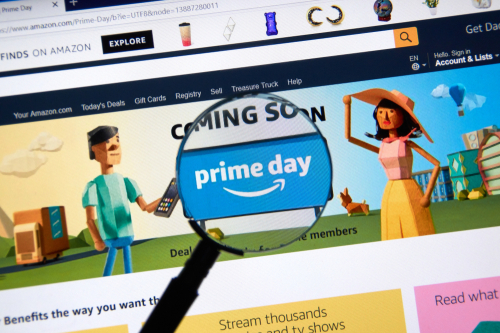How Amazon Is Primed For Prime Day

In Amazon‘s world, the days just keep getting longer. The next Prime Day is a week away, and the eCommerce operator’s annual sales and marketing frenzy will run 36 hours this year (starting at 3 p.m. EST on July 16), up from 30 hours last year.
The average Prime subscriber in the U.S. buys $1,300 of merchandise from Amazon annually, according to Consumer Intelligence Research Partners (CIRP). And sales for last year’s Prime Day were up about 20 percent year over year, underscoring the importance of the event.
“In 2017, Prime Day expanded to 13 countries and featured hundreds of thousands of deals worldwide,” an Amazon spokesperson told PYMNTS. “Prime Day 2017 became the biggest global shopping event in Amazon history at the time, exceeding the previous Cyber Monday and Black Friday — all on a day reserved exclusively for Prime members.”
Prime Day started in 2015. Some 100 million consumers belong to Prime.
Prime Changes
The changes to Prime Day this year show how Amazon is growing and changing. Perhaps the most notable news is that Prime Day will have a significant presence at Whole Foods, the upscale grocery chain that Amazon bought in 2017.
“For the first time, U.S. Prime members will also be able to celebrate Prime Day at their local Whole Foods Market,” the online retailer said in a statement. “Prime members can taste the savings on the high-quality natural and organic products they love on Prime Day (and a half), with an additional 10 percent off hundreds of sale items throughout Whole Foods Market stores, and deep discounts on select popular products.”
Whole Foods has taken on increasing importance for Amazon as it strives to expand its Prime loyalty program even further — and come amid fresh analysis that Prime is underpriced. A Prime membership costs of $119 per year but, recently, Reason Investments said the membership is worth at least $180 to the average member in the U.S. today. Reason Investments also said the eCommerce retailer could charge more for the service and set a “long-run price of Prime to $600.”
The Prime Day discounts at Whole Foods come as Amazon uses other rewards to encourage more shopping at the grocery chain. Just last week, for example, Amazon said that, between July 14 and July 17, users of the Visa-branded Amazon Prime Rewards credit card will receive 10 percent discounts off their purchases there.
Prime Unboxed
This year’s Prime Day will include the debut of another feature. The Amazon spokesperson said, “Amazon is also hosting a series of Unboxing Prime Day events around the world — with surprise events being unboxed in London, Tokyo, Milan, Los Angeles and New York. These events are stemming from a customer insight. We learned that our members continue to love Prime Day and all of the deal shopping, but they also want to feel special and experience their benefits in the real world.”
Amazon does not have Prime Day to itself. Last week, eBay, hoping to steal some of the retail thunder, announced it would offer exclusive deals across a host of categories next week. In a press release, eBay took a swipe at Amazon, saying no membership is required to get the deals during the shopping event.
The online marketplace will enable customers to shop for thousands of items across categories — including electronics, home fashion and sporting goods — at up to 80 percent off regular retail prices. The retailer is also throwing in free shipping on its eBay Deals items. In addition, eBay highlighted in its press release its new Best Price Guarantee service. If customers find an item for less on an eligible competitor’s website, eBay will give them 110 percent off the price difference for the Deals and Top Products.
After Prime Day, and eBay’s own competing event, comes back-to-school sales and the real retail event of the year: the start of holiday shopping. The sales offered next week could provide early signals of how consumers might shop and spend in the fourth quarter.